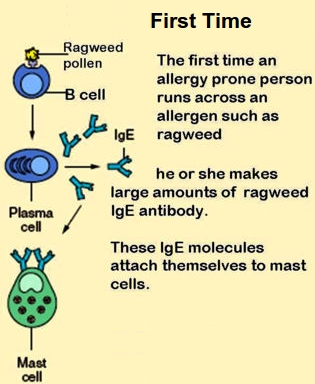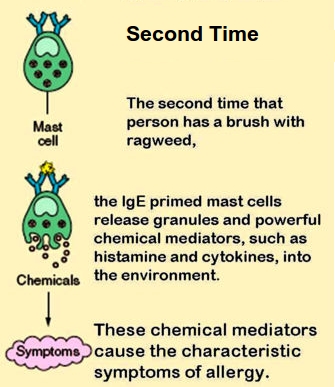Symptoms Check List for Different Types of Allergies
Allergies are generally caused by an over reaction of an overly sensitive immune system due to some foreign substance such as cat dander, pollen, peanuts or bee venom.
Substances that cause allergic reactions are called allergens. Sometimes they can be very specifically identified (such as dust mites), but in other cases there may be a suite of things that triggers reactions (such as allergies to prawns or seafood).
Most allergens are relatively harmless such as hay fever. Allergies are relatively very common and affect about 20-30% of the population are affected by allergies to pollen and dust.
About 30 - 40% of people regularly experience some form or allergy in their lives and there is evidence that the incidence is increasing. The worst times for allergies are spring and autumn due to the increase in pollen in the air.
The most serious form of allergic reaction is anaphylaxis, which can be life threatening. Anaphylaxis requires an urgent response as a medical emergency.
People may go into cardiac arrest and may require resuscitation, oxygen and intravenous fluids. Severe cases may require injection of adrenaline (epinephrine) into the muscles to revive the heart.
Many people known to be susceptible to severe allergic reactions and potential Anaphylaxis carry an epinephrine autoinjector with them for emergency treatment.



Recognising the Symptoms of Allergic Reactions
Below are lists of the common symptoms for the various types of allergies and site of action
Dust and pollen allergy symptoms
- Blocked nose
- Itchy nose
- Cough
- Itchy eyes
- Watery and dripping nose
- Swollen eyes
- Watery eyes
- Skin reactions
- Peeling skin
- Flaking skin
- Itchy skin
- Red skin, rashes
Food Allergy Symptoms
- Anaphylaxis in severe cases
- Diarrhea
- Itchiness in the mouth
- Rectal bleeding
- Severe Shortness of breath
- Stomach cramps
- Swelling in the throat
- Swelling around the face
- Swelling and puffiness of the lips
- Tingling in the mouth
- Tongue swelling
- Vomiting
Insect Sting and Bite Allergies
- Anaphylaxis (for example for bee stings)
- Anxiety
- Chest tightness
- Cough
- Dizziness
- Hives or a very itchy rash (usually red) that spreads fast
- Restlessness
- Shortness of breath
- Skin itching
- Sudden decrease in blood pressure
- Swelling at the site of the bite
- Wheezing
Medication and Drug Allergy Symptoms
- Anaphylaxis
- Itchiness
- Skin rash
- Swelling of the face
- Swollen lips
- Swollen tongue
- Wheezing
Symptoms of Anaphylaxis and Warning Signs of a Potential Medical Emergency
The most commonly affected site affected are:
- skin (80-90%),
- respiratory (70%),
- gastrointestinal (30-45%)
- cardiovascular 10-45%)
- central nervous system (10-15%)
Skin Symptoms of Anaphylaxis
- Hives all over the body, flushing, burning sensation and itchiness.
- Running Nose
- Skin turns blue - sign of hypoxia (lack of oxygen).
- Swelling of the tongue and throat.
Respiratory Symptoms of of Anaphylaxis
- A high-pitched wheezing or whistling sound when breathing.
- Cough
- Hoarseness of the Voice
- Pain when swallowing
- Shortness of breath
- Wheezing and bronchial muscle spasms
Cardiovascular Symptoms of Anaphylaxis
- Abnormal heart beat
- Cardiac arrest (heart stops)
- Feeling lightheaded and dizzy
- Heart attack
- Loss of consciousness
- Low blood pressure
- Slow heart rate caused by low blood pressure
Gastrointestinal Symptoms of Anaphylaxis
- Abdominal cramps
- Diarrhea
- Loss of control of the bladder
- Pelvic pain (similar to uterine cramps)
- Vomiting